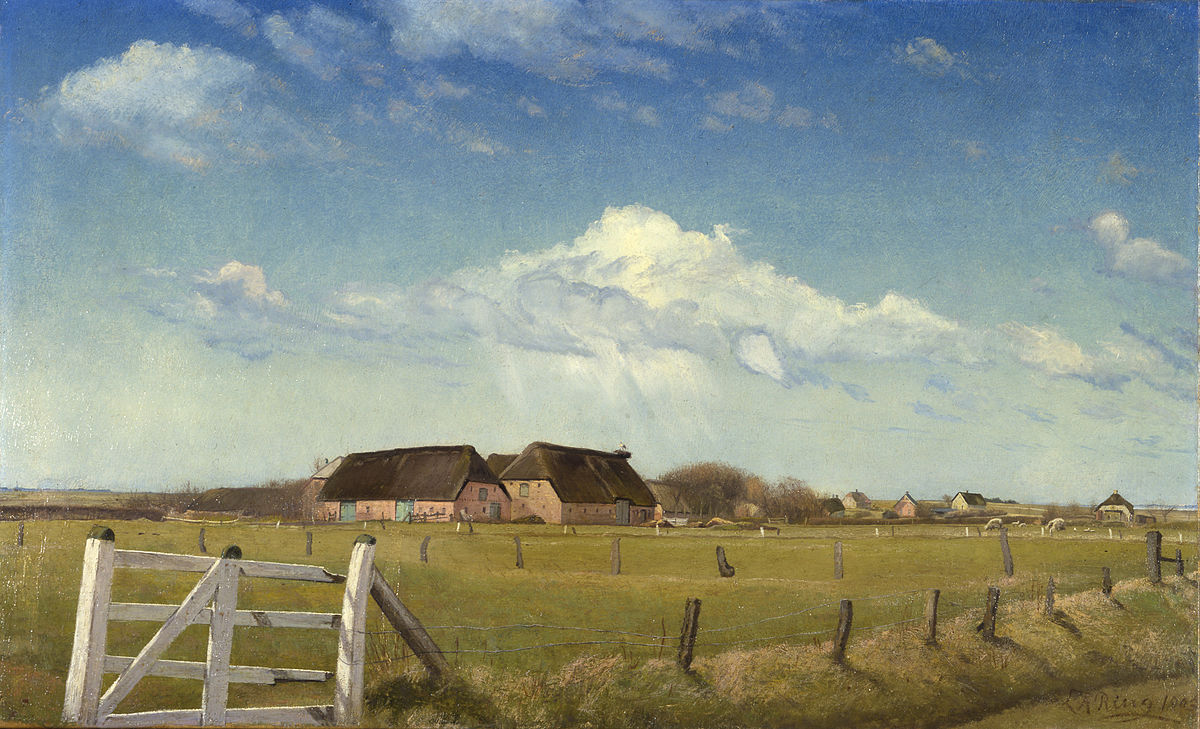Hamilton, ON. Every student has debt, and not just financial. They owe something to those who took time and gave of themselves to craft freshman writing and sharpen sophomore thinking; to make introductions to new equations and authors and ideas; and to provide a bit of guidance about the road ahead.
As a former student of John Van Rys, I owe such a debt. In my senior year of undergraduate education at Redeemer University, he taught a seminar on Canadian fiction where I met some of my now long-time friends: Alistair MacLeod, Margaret Lawrence, Alice Munro, Timothy Findley, Michael Ondaatje, and many others. As my own career and educational journey brought me back to the place from which I set out, I was both surprised and delighted to see that John was publishing short stories. I have a hunch that within almost every academic in English literature is an aspiring poet, novelist, and storyteller.
I understand the Front Porch Republic is a predominantly American outfit. But as the Canadian interloper on the editorial team, I’m fascinated by the ways in which the Canadian imagination conceives of place, limits, freedom, responsibilities, and regionalism in ways that are similar to and distinct from our neighbours to the South. (Yes, that is how you spell neighbour in the Queen’s English!)
Upon the publication of John Van Rys’s first full collection of short stories, Moonshine Promises, it was my distinct pleasure to ask him a few questions about his career, his writing, and the ways in which he has come to regard the importance of place in his stories.
Doug Sikkema: For our readers who might not know you, can you briefly tell us a bit about yourself. Who is John Van Rys?
John Van Rys: Such a simple but fraught question! As I confess at my author website, I’m a tick magnet. Yes, ticks love me, but the feeling isn’t mutual. At Redeemer University, where I teach literature and writing courses, some people call me the Egg Man because I have egg-laying hens on my hobby farm and sell them at work. The chickens are a clue that I’m also an animal lover and, of necessity, a poop scooper. I guess, too, that I’m an egghead, as once I started in school I never left it: from kindergarten through to a PhD in Canadian Literature to more than thirty years as a professor, I’ve never spent a single year out of school. I’ve also been married to my wife April for forty years, and we have four children (two by birth and two through adoption), spread apart in age by twenty years. As part of our love of animals, we’ve lived on two hobby farms (one in Iowa and now one in Southwestern Ontario near Hamilton)—also meaning that we’ve spent a lot of time renovating old farmhouses that have proven to be “money pits,” as a realtor once said to us. If I go back further, I would describe myself as a second-generation Dutch immigrant, my parents having immigrated to Canada in the 1950s, where they met and married.
Doug Sikkema: You are an academic-turned-creative-writer. Did you always have the creative writing itch? What prompted this transition? Or, if transition is too strong a word, how do you manage keeping both kinds of writing/thinking living side by side?
John Van Rys: The creative-writing itch was there but dormant for a long, long time—decades, in fact. Instead, I first became dedicated to a life of reading, of seeking to become a kind of ideal reader out of my admiration for what poets and playwrights and fiction writers could do, for the worlds they created and invited readers to enter. Soon after I started teaching, though, I decided to sit in on a colleague’s poetry-writing course.
My thought was that I was teaching students to read and appreciate poetry but had never written it myself; I wanted to know it from that side of the page so that I could teach it better. Since then, I’ve written poetry sporadically, with long quiet spells. It wasn’t until recently that I took it up again more deliberately and have dared to call myself a poet. It took me much longer to find the time and courage to begin writing fiction.
Five years ago, I turned 55, a milestone that pressed me to stop making excuses, especially that I couldn’t find the time. After all, I might soon enough run out of time. To meet a need within our department’s writing program, I had also begun teaching creative writing. With my wife’s encouragement, my apprenticeship to the craft of fiction began during the Christmas break of 2016 with a story that became a gift. Since then, fiction has become the dominant genre in my writing life, but I continue to work in other forms so as to exercise different parts of my mind. While textbook writing exercises my teacherly nature and scholarly writing my analytical nature, poetry and narrative satisfy a desire for imaginative play, of both serious and lighthearted play with words and stories. In the end, I find that all my writing projects seem to feed each other symbiotically.
Doug Sikkema: Moonshine Promises is a collection of stories that traces various people in a community over time. Can you explain how this collection started? Who was the first character you “met” and what was that encounter like?
John Van Rys: That first story I wrote in December 2016, “The Jelly Cupboard,” tells the tale of Evan Mulder—no handyman at that point—building the cabinet named in the title, prompted by his wife Mae signing him up for a woodworking course. Evan and Mae, not-so-subtle doubles for my wife and myself, were the first characters I met in my apprenticeship. I wished to begin with personal material and experiences, to see what they might yield. So it was like meeting the younger versions of myself and my wife to an extent, but because I gave myself complete liberty to fictionalize rather than to write memoir, it also became an opportunity to exaggerate events, explore unintended consequences of choices and actions, and see more of what made these characters tick in their relationship. As I wrote more stories centred on Evan and Mae and their family, I came to see that for Evan in particular, who is the central consciousness for these stories, it was all about his fears and loves, his bewilderment in the face of the life he was journeying through.
Doug Sikkema: Gerald Lynch praises your work as a “short story cycle” in the vein of other writers like Alistair MacLeod, Alice Munro, and others. What is a short story cycle? And were you conscientiously creating this cycle as you wrote?
John Van Rys: A story cycle is a collection of stories, each crafted as a distinct narrative, that taken together offer some form of narrative arc or thematic cohesion. Typically, one or more characters recur from one story to the next, and the sequence of stories sometimes captures the passing of time. Classic examples in Canadian Literature, my area, are Stephen Leacock’s Sunshine Sketches of a Little Town, Margaret Laurence’s A Bird in the House, and Alice Munro’s Lives of Girls and Women.
In American writing, a recent example would be Elizabeth Strout’s Olive Kitteridge. When I started the stories that eventually became Moonshine Promises, I had no thought of a story cycle. I simply wanted to explore the lives of these characters in as many directions as I could imagine. When I started believing that I had enough stories for a collection, that’s when the work began of shaping them into a cycle. Initially, I clustered the stories thematically, but in the end decided that chronology worked best to convey to readers the overall trajectory of the characters’ lives and relationships. In fact, the first story, “Under the Honey Moon,” was the last story that I wrote for the collection; in it, I go back to the beginning of Evan and Mae’s marriage, their elopement as teenagers. That first story is bookended by the final story, which happens to be titled “Cycles,” situating Evan and Mae in the near past (prior to the pandemic) while recounting their first date as teenagers decades before, a bike ride.
Doug Sikkema: Who are some of the other writers who have most informed your style?
John Van Rys: You’ve named a couple of them already in Alice Munro and Alistair MacLeod. I have to begin with Munro, given not just the superb craftsmanship of her stories but also her commitment to the rural landscape and people of Southwestern Ontario, where I grew up and where I locate my own stories. Alistair MacLeod is a favourite for the pure quality of his fiction and his style, as well as his portrayal of working-class families from the region he was committed to, Canada’s east coast, specifically Cape Breton. A particular influence on my approach to masculinity has been Larry’s Party by Carol Shields, a novel focused on Larry Weller making his bewildered way through life and love.
When I first started out, my ambitions were fairly modest: I wanted to work in the comic mode, to mine the same vein as writers such as Stuart McLean in his Vinyl Café stories or Garrison Keillor in his Lake Wobegon tales. I’ve sought to be humorous and moving at the same time, eliciting laughter and risking sentiment, while avoiding sentimentality. I’m guided in my style by Robert Frost, who said “No tears in the writer, no tears in the reader. No surprise for the writer, no surprise for the reader.” I think this applies to both tears of sadness and of joy.
Doug Sikkema: You have a “hybrid” of Canadian and American identities, having spent time in rural Iowa and now in rural Ontario. How are these places similar and different? How have these places informed your fictional worlds?
John Van Rys: I vividly remember arriving in Iowa for my job interview at Dordt University, stunned to discover the hilly landscape. I had naively believed that it would be flat prairie. During fifteen years there, I came to love the big Midwestern sky and the wide-open landscape, the amazing horizons. At the same time, there was a certain kind of conservatism that as a Canadian I couldn’t appreciate, along with farming on a massive scale with practices that were profitable but nevertheless seemed in the long run to be quite destructive of the land. Southwestern Ontario, where I was born, seems by comparison more settled, more populated, older, with smaller farms and more varied crops and agricultural practices.
This region is more fully the landscape of my imagination, so even though some of the events that inspired stories in Moonshine Promises happened in Iowa, I’ve situated them in and around London, Ontario, where I grew up. Except for a summer working on a dairy farm, my childhood and youth were spent in cities. Interestingly, moving onto a hobby farm, partly inspired by memories of that summer but mostly prompted by having an animal-loving daughter, happened in Iowa as a natural progression from city to town to country. When we moved back to Ontario, there was no question but that we would live on another hobby farm. In Moonshine Promises, those two hobby farms became one, and the stories trace Evan and Mae’s journey from the city to the country, a transition requiring all sorts of adjustments and difficulties and joys—from the challenges of renovating an old farm house to comical efforts to outwit egg-stealing raccoons to facing the deaths of animals.
Doug Sikkema: Wendell Berry often talks about a poet or writer’s “responsibility” to place, that is, the writer must “respond” as they are “able” to the places they come from. How do you think about this role when you write? What fidelity to your region and community (if any) do you feel when you write stories?
John Van Rys: Thus far, all my stories have been grounded in the region around London, Ontario. The Mulder farm, inspired by the farm I live on near Dunnville, which is actually closer to Hamilton than London, eventually becomes the centre of this imaginative world, located near the fictional town of Windermere on the way from London to Port Stanley on Lake Erie. I have great affection for this landscape, where I lived until my mid-twenties. As I describe it in one story, it’s an area which looks on a map like a roughly nibbled wedge of cheese situated between Lake Erie and Lake Huron. The port towns on both lakes, the provincial parks and their beaches, the farms and fields and forests, the small towns and the cities—it’s what I want to evoke even in the story elements that are fully imaginary. At the beginning of Berry’s What Are People For? are two of my favourite essays, “Damage” and “Healing.” These essays articulate what it means to live and write in relation to place, the twin possibilities of our cultivating and culture-making. In some sense, I see our capacity for damage, even if unintended, and the possibilities of healing, often from surprising sources, as the poles between which the characters in Moonshine Promises move in this landscape.
Doug Sikkema: Finally, if there’s one “takeaway” you’d like readers to get from Moonshine Promises, what is it? That is, do you hope these stories “form” readers who encounter them, and if so, in what ways?
John Van Rys: Above all, I simply wish readers to enjoy my stories and be moved by them, to laughter certainly but maybe also to a teardrop or two. (I’d settle for a sigh or a slightly tightened throat.) But I do hope readers are also shaped by my tales of domestic comedy to see that love for the long haul, difficult as it is, is not only possible but greatly to be desired; to see such love, grounded in the moonshine promises we make to each other, as both ridiculous and miraculous; to see that through our weakness and brokenness a certain glory shines.





